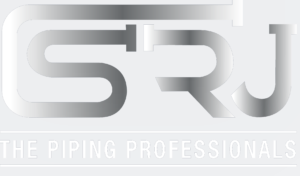
Avoid costly leaks, contamination, and catastrophic failures by identifying substandard piping materials before they cause irreversible damage.
Chemical processing plants rely on piping systems to safely transport corrosive, toxic, and high-pressure substances. Yet using substandard materials can lead to:
A pharmaceutical plant in Gujarat suffered a ₹5 crore loss when hydrochloric acid leaked from a poorly welded PVC pipe, contaminating an entire batch of medicine.
Issue: Cracks, porosity, or uneven welds weaken pipes under pressure.
How to Spot It: Look for discoloration, rough edges, or inconsistent bead patterns.
Issue: Fake or outdated mill test reports (MTRs) hide inferior steel or plastic grades.
How to Verify: Cross-check certifications with ASME B31.3, ASTM, or ISO standards.
Issue: Cheap stainless steel (e.g., 304 instead of 316L) corrodes quickly with acids.
Red Flag: Rust spots or pitting within months of installation.
Issue: Manufacturers cut costs by reducing wall thickness below schedule ratings.
Test Method: Ultrasonic thickness testing before installation.
Issue: Rough interiors trap chemicals, accelerating corrosion.
Standard Requirement: Electropolished surfaces (Ra < 0.8 μm) for high-purity applications.
| Failure Type | Cause | Consequence |
|---|---|---|
| Stress Cracking | Wrong plastic (e.g., PVC for strong acids) | Sudden pipe bursts |
| Galvanic Corrosion | Dissimilar metals in contact | Rapid metal decay |
| Erosion | High-velocity slurries | Thinning walls → leaks |
| Gasket Degradation | Incompatible elastomers | Seal failure → spills |
A fertilizer plant in Maharashtra ignored chloride stress corrosion warnings. A 316L stainless steel pipe cracked, releasing ammonia gas and forcing an emergency evacuation.
| Standard | Application |
|---|---|
| ASME B31.3 | Process piping for chemicals |
| ASTM A312 | Stainless steel pipe specs |
| NACE MR0175 | Sulfide stress cracking resistance |
| ISO 15649 | Piping system vibration limits |
Pro Tip: Always demand mill test reports (MTRs) and third-party validation for critical systems.
A sulfuric acid line in a Tamil Nadu plant ruptured after just 18 months.
The contractor used carbon steel instead of PTFE-lined steel, despite the specs.
SRJ Piping replaced it with Hastelloy C-276 piping, which has:
Our experts will identify risks in your current system and recommend compliant solutions.
Answer: Every 6 months for high-risk systems, annually for general use.
Answer: Only if NDT testing confirms structural integrity—otherwise, replace it..
Answer: PP-lined steel, PVDF, or FRP—avoid metals unless specially coated.
Inferior piping can lead to disasters, fines, and shutdowns. Ensure your system meets ASME, ASTM, and ISO standards with SRJ Piping.